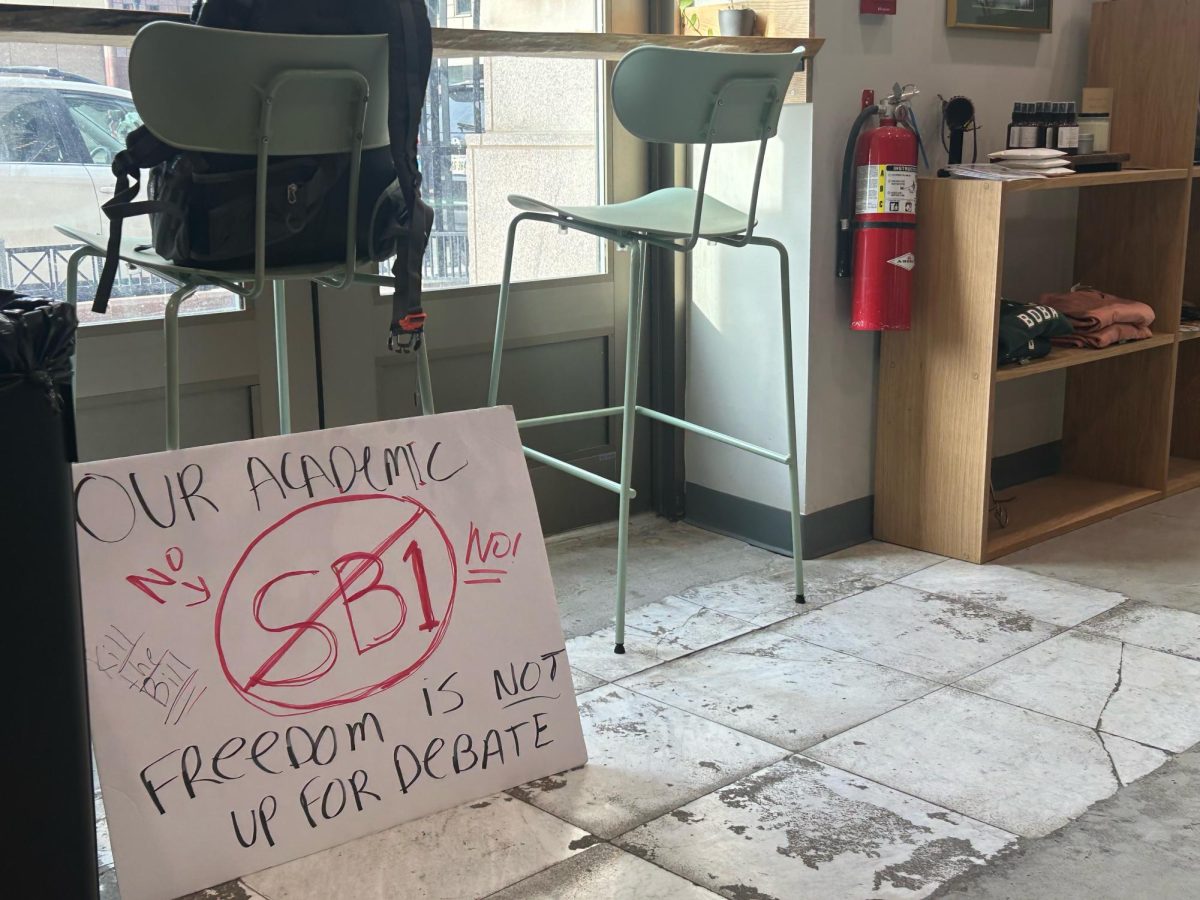President Donald Trump signed an order to dismantle the Department of Education last week, and as education is put on the federal back burner, it emerges to the surface in state-level politics.
Educators, Ohio Education Association members and activists across the state gathered to advocate for public and higher education on March 19, as Ohio’s House of Representatives moved to vote on Senate Bill 1.
The OEA is the largest labor union in the state, representing people who work in public education.
“We also represent some higher education faculty and staff, so that’s one of the reasons why Senate Bill 1, the higher [education] bill, is of interest to us, too,” said Scott DiMauro, the president of OEA.
The main goal of the organization is to advocate for educators, students and public education in general, DiMauro said.
“The purpose of lobby day is to give our members a chance to talk directly with the legislators about the impact their decisions have on what happens in the classrooms,” DiMauro said.
DiMauro said the current central focus is the state budget and the implementation of the “Fair School Funding Plan,” which encourages the state to “fully and fairly fund public schools.”
Schools in Ohio are funded through several sources including state, federal and local funding. However, federal funds only make up a small percentage. State funds, allocated by the budget, and local funds, derived from property taxes and levies, are the majority.
“The heart of this funding issue is that some of the state leaders in Ohio believe that we should move to a voucher program where anybody, regardless of their income level, is able to take a voucher for their child to go to private school,” said Dan Greenberg, an educator in Sylvania. “It’s set to cost one billion dollars next year.”
Voucher programs, programs that award students scholarships to private schools, are expanding within the state, and cost the state nearly $970 million. Of these scholarships, EdChoice Expansion, a scholarship program without an income requirement, is one of the most prevalent.
“When the state is also saying, ‘we’re going to increase the availability and funding of vouchers to one billion, but we’re going to cut one hundred million dollars from public schools’ — it’s very disconcerting to all those who care about public education,” Greenberg said.
Public schools serve nearly 90% of students in Ohio, DiMauro said, and he believes the budget does not seem to reflect that.
“One of the things we’re really concerned about in this budget is that there’s a lot more money continuing to go to vouchers for private schools to pay for private school tuition and mostly benefiting a small number of people,” he said.
According to DiMauro, the state has a job to serve its students by ensuring that they have what they need to succeed.
If these funds are cut from public education, “programs or opportunities for students are diminished. That can be in the form of larger classes, fewer course offerings, less access to technology, transportation, extracurriculars,” he said.
In addition to this, DiMauro said SB1 is also something to watch.
“We’ve been lobbying on Senate Bill 1 throughout this general assembly and it’s been on a fast track,” DiMauro said.
The OEA and higher education groups have worked on defeating the bill in its prior forms.
“We’re really concerned that it undercuts the quality of instruction in higher education,” DiMauro said. “There are provisions that, for example, make it illegal to talk about diversity or equity or inclusion, which we think just is not good for students. There’s also provisions in the bill that would take away the right of people who work in higher education to bargain collectively for their working conditions.”
As of now, SB1 returns to the Ohio Senate to be voted on with added changes and will await signage from Gov. Mike DeWine. The final budget, with any added amendments such as the fair school funding policies, won’t be voted on until June.
“What’s happening today is a great reminder that in a democratic system, it’s important for people to speak up and talk to their elected officials,” DiMauro said.
DiMauro said that people can support local educators by giving them, and their students, a voice.
“There are a lot of positive takeaways from the day, like helping teachers and teacher leaders to understand the politics of things,” Greenberg said. “Education is political, whether we like it or not. It wasn’t a one and done activity. We will continue our advocacy.”
Ari Collins is a beat reporter. Contact her at [email protected].



